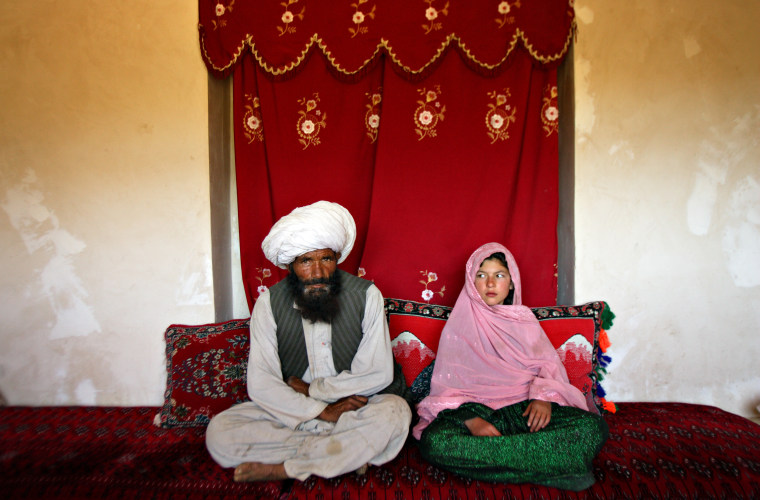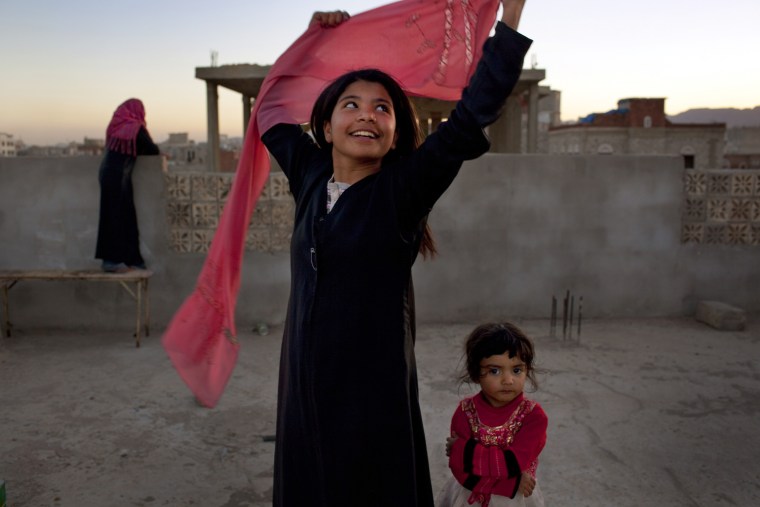Married at the age of 8. That fact alone is hard to fathom. It's even more difficult to stomach when you think of the resulting forced sex, physical abuse and early pregnancies that often result. But for girls in more than 50 countries in the developing world, and for a minority in the developed world, this is their reality. The reality of child marriage.

Photojournalist Stephanie Sinclair has been documenting this issue around the world since 2003. A large body of her work was published last year in National Geographic.
We asked Sinclair to tell us more about her reporting:
How did you come up with this story idea and how long have you been reporting it?
This project began in 2003, after I met several girls in Herat, Afghanistan who had attempted suicide by self-immolation. I noticed that many of the girls who had set themselves on fire had been married at very young ages, in many cases prepubescent. It was the first time I’d ever encountered anyone who had been married so young. This phenomenon seemed to link many of these girls and this intense act of desperation. I couldn’t help but feel a responsibility to research and document whatever it was that would make these girls take such drastic measures. The resulting project has taken almost a decade to date, and I am still working on the issue. What makes it so complicated is its prevalence in more than 50 countries worldwide. To document it properly, one needs to address the many cultural reasons behind the issue as well as the differing impacts on the varying societies.
How many different countries did you travel to for this story, and how did you gain access to these sensitive stories and events?
I have documented this issue in Afghanistan, Nepal, India, Ethiopia and Yemen. Access has always been incredibly difficult for several reasons. The most obvious obstacle is that parents and families innately know that what they are doing can harm their children. But they continue this harmful traditional practice because they may feel societal pressures, have concerns for their safety and well being should they remain unmarried, or may even need to simply sell their girls in a desperate move to feed their other children. Fortunately, almost every image in this project was done with the help of the locals living within these societies. They wanted this issue to get support so they could be further empowered to combat child marriage. Those people were key in helping me gain access, and telling these stories would have been impossible without them.

What is most disturbing to you about child marriage and what would you most like people to know about it?
There are many disturbing factors related to child marriage. But I think the thing that we must acknowledge is that in most cases these young children do not want to be married. They want normal lives — to play with their friends, be educated and have a full adolescence. These marriages rob many girls of their innocence, many times before puberty, and this is something that as a global society we cannot tolerate. The bottom line is child marriage isn't just harmful to the girls involved. It's at the root of so many other societal ills: poverty, disease, maternal mortality, infant mortality, violence against women. All of those are symptoms connected to the same problem: child marriage. If you solve the child marriage problem, these other issues benefit as well.
Is there a solution?
A multifaceted approach is needed to address the issue of child marriage. In fact, yesterday Sec. Hillary Clinton announced a USAID-sponsored pilot program in Bangladesh that will work with religious leaders, media, local governments and NGOs to foster community support for an end to child marriage. However education is still the single most protective factor against this practice. This means keeping the children in school as long as possible, as well as educating the communities about its harmful impact on the health of their girls, their grandchildren, as well as their societies as a whole.
I also strongly believe there is not just a need for awareness-raising and prevention work, but we must find ways to help these girls who are already in these marriages — be it through giving financial incentives to their families to let them stay in school, or vocational training so they can have more say in their lives and households. Quality medical treatment is also needed for girls who are giving birth at these young ages. These girls need long-term solutions. Unfortunately, there is no quick fix. But there seems to be a growing movement aimed at ending child marriage. In fact, at yesterday's State Department announcement, Archbishop Desmond Tutu, chairman of The Elders, announced a very ambitious goal: to end the practice by 2030. If this issue remains a global priority, I'm optimistic that we can meet that deadline.
To mark the first inaugural International Day of the Girl Child on October 11, 2012, the United Nations Population Fund will partner with VII Photo to host an exhibition at the United Nations Headquarters in New York to present the personal narrative of the girls themselves. The hope is that their stories, presented in photography and video productions by Stephanie Sinclair and Jessica Dimmock, will renew global attention toward this critical issue and accountability across the international community. Archbishop Desmond Tutu and UN Secretary General Ban Ki Moon will be among many prominent figures attending the opening.
- Follow the campaign at Too Young to Wed and tooyoungtowed.wordpress.com
- See additional images from Sinclair's project and read more about child marriage at National Geographic Magazine
- View a video including interviews with some of the child brides at the Pulitzer Center on Crisis Reporting
- Read 'In Niger, child marriage on rise due to hunger' in PhotoBlog